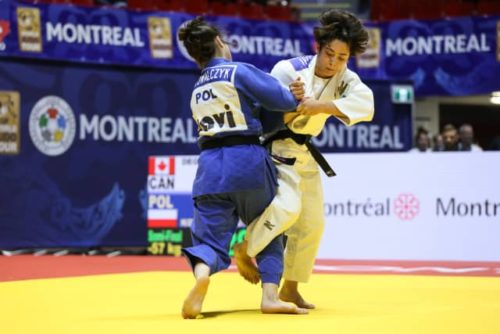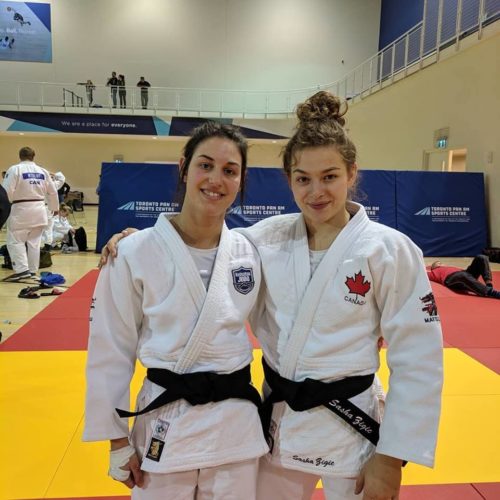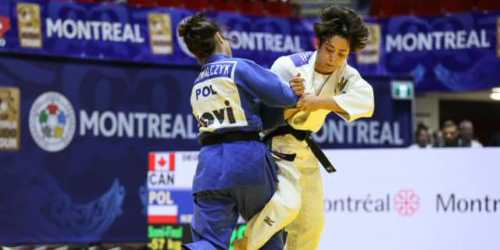How to build a thriving judo culture in Canada

By Will Johnson
You can’t teach a child judo the same way you can teach an adult—it just doesn’t work. First they’ll get bored, then they’ll get hurt.
According to Andrzej Sadej, the Coaching & Education Director and Para Head Coach of Judo Canada, that’s one of the key reasons the sport hasn’t yet caught on in this country. In the past, in a majority of programs, instruction didn’t take into account the specific needs of children, like making the activities fun, so now his national sport organization is focused on pivoting their nationwide programming. Using the Long-Term Development in Sport and Physical Activity (LTD) framework as a guiding resource, they hope to continue building a thriving judo culture in Canada.
“This is precisely what we’re trying to preach. It is well understood that judo has been incorporated as a physical education subject in countries such as the Netherlands, Belgium, France, Russia, and of course Japan. It hasn’t caught on in the same way here in Canada, and that’s why we’ve gone through the process of redesigning our programming with LTD as the backbone and blueprint,” said Sadej.
“We want things to be developmentally appropriate, so our NCCP is set up to train instructors to work with participants under the age of puberty and through puberty. So our NCCP-trained instructors and coaches at the national level understand the emphasis is to explore rather than instruct.”
According to Sadej, children learn primarily with their muscle memory and their bodies rather than their minds. He used the example of young predatory animals playing biting games in preparation for their adult life and suggested that young participants in judo programs learn the same way. Through sparring playfully with their classmates and having fun, they’re able to pick up the skills necessary to ascend to the next level of the pathway.
“It was a phenomenal exercise to attempt to adjust sport reality in Canada to promote a culture we want to see. In the past, the majority of judo instruction for children was just a miniature version of adult-style teaching and that’s how it functioned for decades. But now it’s finally starting to change, quite dramatically.”
And for those concerned that judo may promote violence, or think that it’s just fighting, Sadej wants them to understand that it’s a physical pursuit anchored by a moral code.
“We teach that without partnership there is no progress, and this reality is unique to judo. The majority of sports – even so-called Martial arts – can be performed by oneself without the involvement of a partner. Progress in judo is not possible without a partner/opponent. You learn how to respect your opponent, and about things like friendship, respect, humility. Our programs are emphasizing that part of judo, teaching what it means to be honourable.”
Exploration games
Long-Term Development Advisor Richard Sylvester recently attended the Nakamura Judo Club in Winnipeg, run by Coach Airton Nakamura, and was impressed by the variety of pedagogical techniques being used by the instructor. He said it’s a good example of the growing judo culture in the country.
“He brought everyone together and they did a warm-up, then they had a small lesson of the day. Then there were a lot of exploration type games, and I remember one involved putting their belts in the middle and then partnering up to do a sort of tug-of-war. He then used that to feed into the formal instruction,” Sylvester said. After all, creating curiosity taps into what the participants are motivated to learn, rather than only focusing on info the coach feels is important. “The temptation for coaches working with kids is to just focus on formal instruction and bore them to death, which doesn’t create curiosity in the children to solve problems.”
At the recent multi-community 2022 Sport for Life Canadian Summit, which had a location in Winnipeg, Coach Nakamura delivered a presentation to the audience in which he echoed Sylvester’s words: “Who made me love the sport?” he asked. “My first coach. He made everything fun.”
Sylvester feels judo is the perfect sport to incorporate into a multisport approach to athlete development because it develops a diverse set of skills and capacities, including strength development.
“Even just experiencing the leverage of your body against somebody else’s body, exploring grappling and strength, is incredibly beneficial. You can’t just throw a barbell on their back with little kids, but you can work on grappling, hanging, crawling, and all kinds of different strength training that’s appropriate for kids,” he said.
“They learn about flexibility, rapid movements, how to move their arms and legs. Judo covers all of that, which makes it a good sport to develop a diverse set of skills and capacities. You may be able to use some of these skills in a bunch of different sports, but in judo you can use all of them. When you’re using these principles, kids can thrive and stay in sport longer and be healthier.”
A sign for the future
It’s a heady time in the judo world, despite the impact of the pandemic. Most of their clubs and programs are beginning to reopen across the country, and in the meantime Canadian judo athletes have been making a splash on the world stage.
country, and in the meantime Canadian judo athletes have been making a splash on the world stage.
“Ironically during the time of COVID-19, Canadian judo at an elite level outperformed itself at a historical level with two bronze medals and two fifth place finishes in the 2020 Summer Olympic Games. In the past we had one medal and that was a great success considering the low profile of judo in Canada and the depth of the international field with close to 200 countries competing at the highest level. Now we’ve doubled that. On top of that, in 2019 and 2021, two Canadian females won the country’s first- and second-ever World Championship titles, and we’ve had our first-ever female Paralympian silver medalist. So those accomplishments will reverberate through the community,” said Sadej.
“So many people have been congratulating us for accomplishing all this during such a difficult time, and we’re hearing there’s an unexpected number of newcomer children coming out for judo, so it’s great. We’re starting to have to keep waiting lists because we don’t have space. I figure that’s a pretty good sign for the future.”

